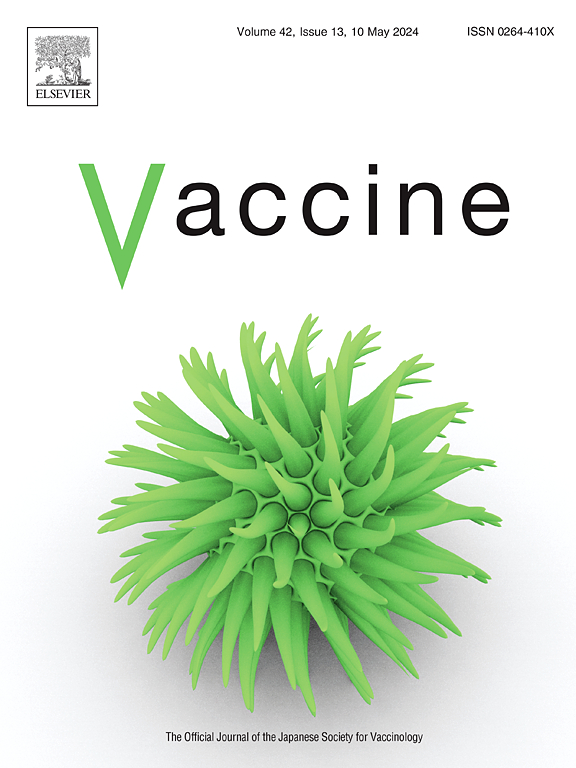比较14614名接种和未接种人乳头瘤病毒疫苗的丹麦年轻妇女的危险行为
IF 4.5
3区 医学
Q2 IMMUNOLOGY
引用次数: 0
摘要
人乳头瘤病毒(HPV)是一种常见的性传播感染。不使用避孕套、吸烟和酗酒等危险行为往往集中在同一个人身上,增加了他们感染HPV的倾向。本研究旨在比较丹麦接种hpv疫苗和未接种hpv疫苗的年轻女性的危险行为,包括不使用避孕套、吸烟和频繁酗酒。方法利用2019年丹麦国家青年研究中14,614名15-23岁年轻女性的调查数据,分析不使用避孕套、吸烟和频繁酗酒的情况。有关HPV疫苗接种状况的数据来自丹麦疫苗接种登记册。使用多水平逻辑回归评估相关性。结果在未经调整的分析中,接种疫苗的妇女不使用避孕套的几率高于未接种疫苗的妇女(OR: 1.30, 95% CI: 1.09-1.55)。经年龄调整后,相关性较弱且无统计学意义。在调整了其他人口统计学和社会经济因素、吸烟和酗酒后,接种疫苗的妇女使用非安全套的几率比未接种疫苗的妇女高21% (95% CI: 1‐44%)。当排除使用激素避孕药的稳定关系的女性时,这种关联减弱,不再具有统计学意义。HPV疫苗接种状况与吸烟或酗酒无关。结论:这项研究表明,在年轻女性中,接种HPV疫苗与吸烟和酗酒等危险行为之间没有明确的联系。在接种hpv疫苗的妇女中,不使用避孕套的情况更为普遍,但研究结果表明,年龄、关系状况和激素避孕药的使用可能解释了这种关联的相当一部分。本文章由计算机程序翻译,如有差异,请以英文原文为准。
Comparing Risk Behaviour among 14,614 Human Papillomavirus Vaccinated and Unvaccinated Danish Young Women
Background
Human papillomavirus (HPV) is a common sexually transmitted infection. Risky behaviours such as non-condom use, smoking, and binge drinking tend to cluster within the same individuals, increasing their propensity to become infected with HPV. This study aimed to compare risk behaviours, including non-condom use, smoking, and frequent binge drinking, among HPV-vaccinated and unvaccinated young women in Denmark.
Methods
Survey data from 14,614 young women aged 15–23 years from the Danish National Youth Study 2019 was used to analyze non-condom use, smoking, and frequent binge drinking. Data on HPV vaccination status was extracted from the Danish Vaccination Register. Associations were assessed using multilevel logistic regression.
Results
In unadjusted analyses, the odds of non-condom use were higher among vaccinated women compared to unvaccinated women (OR: 1.30, 95% CI: 1.09–1.55). Associations were weaker and not statistically significant after adjustment for age. After adjusting for other demographic and socioeconomic factors, smoking, and binge drinking, the odds of non-condom use were 21% higher (95% CI: 1‐44%) among vaccinated women than among unvaccinated women. When excluding women in steady relationships using hormonal contraceptives, the association was attenuated and no longer statistically significant. HPV vaccination status was not associated with smoking or binge drinking.
Conclusions
This study showed no clear association between being HPV vaccinated and risk behaviour including, smoking and binge drinking among young women. Non-condom use was more prevalent among the HPV-vaccinated women, but the results suggest that age, relationship status and hormonal contraceptive use may explain a considerable part of the association.
求助全文
通过发布文献求助,成功后即可免费获取论文全文。
去求助
来源期刊

Vaccine
医学-免疫学
CiteScore
8.70
自引率
5.50%
发文量
992
审稿时长
131 days
期刊介绍:
Vaccine is unique in publishing the highest quality science across all disciplines relevant to the field of vaccinology - all original article submissions across basic and clinical research, vaccine manufacturing, history, public policy, behavioral science and ethics, social sciences, safety, and many other related areas are welcomed. The submission categories as given in the Guide for Authors indicate where we receive the most papers. Papers outside these major areas are also welcome and authors are encouraged to contact us with specific questions.
 求助内容:
求助内容: 应助结果提醒方式:
应助结果提醒方式:


